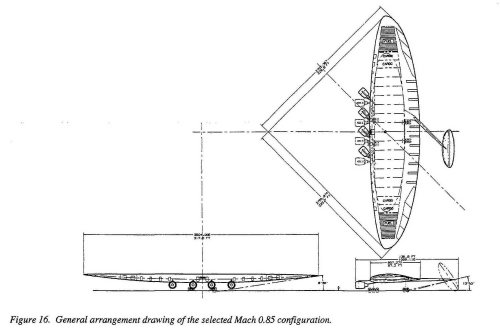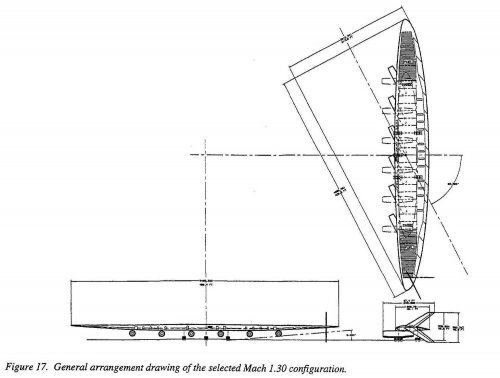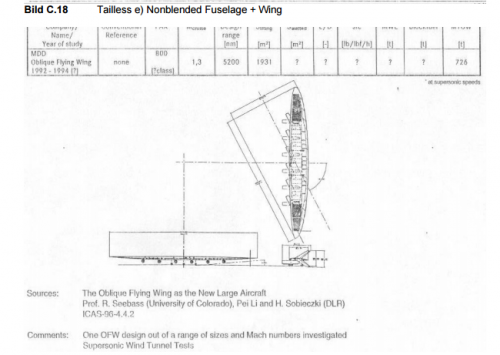- Joined
- 1 April 2006
- Messages
- 10,726
- Reaction score
- 6,736
MDC (formally, Boeing already) 1997 Oblique Flying Wing commercial transport, sub- and supersonic versions.
Still cant't understand how passengers are to travel with acceleration directed to 45-60 angle to fuselage centerline. AFAIK such direction G-Forces are one of the hardest to withstand for un-prepared man. In rotating chairs? Or with extra reserve of paper bags?
Still cant't understand how passengers are to travel with acceleration directed to 45-60 angle to fuselage centerline. AFAIK such direction G-Forces are one of the hardest to withstand for un-prepared man. In rotating chairs? Or with extra reserve of paper bags?



